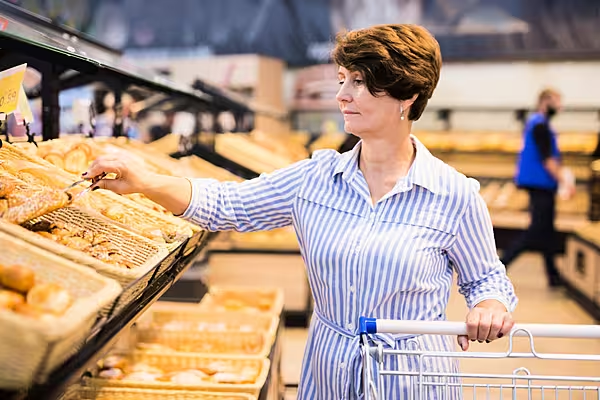British grocery inflation has fallen below 10% for the first time since July 2022, industry data recently showed, providing some relief for consumers as they enter the key Christmas shopping period.
Market researcher Kantar noted that annual grocery inflation was 9.7% in the four weeks to 29 October, down from 11% in last month's report.
"While the drop ... is positive news and something of a watershed, consumers will still be feeling the pinch," Fraser McKevitt, head of retail and consumer insight at Kantar, said.
"We’re only seeing year on year price falls in a limited number of major categories including butter, dried pasta and milk."
Price Increases
Prices are rising fastest in markets such as eggs, sugar confectionery and frozen potato products.
The Kantar data provides the most up-to-date snapshot of UK grocery inflation.
The most recent official data showed annual food inflation was 12.1% in September, though prices did fall on the month for the first time in two years.
All of the country's major supermarket groups have cut the prices of some essential products in recent months.
Last week, Sainsbury's said it had spent £118 million since March in keeping prices down.
Food inflation's recent downward trajectory is being closely watched by consumers, the Bank of England as it considers interest rates, and lawmakers, given that Prime Minister Rishi Sunak has promised to halve overall inflation this year ahead of a probable national election in 2024.
Sales Growth
Kantar said grocery sales in the four weeks to 29 October rose by 7.4% compared with last year.
It said own label lines grew by 8.0% over the period, though the gap is narrowing with branded products, which grew at 6.7%.
The researcher also noted that the proportion of sales through promotions was up across every grocer versus last year – something that has only happened on one other occasion in nearly ten years.
Spending on promotions hit 27.2% of total grocery sales – the highest level since Christmas last year.
A separate survey published recently by Barclays showed British consumer spending grew at the slowest pace in more than a year last month, reflecting concerns about the cost of living in the run-up to Christmas.
UK Supermarkets' Market Share And Sales Growth (%)
| Market share 12 wks to Oct 29 2023 | Market share 12 wks to 30 Oct 2022 | % change in sales (yr-on-yr) | |
| Tesco | 27.4 | 27.0 | 9.5 |
| Sainsbury's | 15.2 | 14.9 | 10.1 |
| Asda | 13.6 | 14.3 | 2.6 |
| Aldi | 9.7 | 9.2 | 13.2 |
| Morrisons | 8.6 | 9.0 | 3.2 |
| Lidl | 7.6 | 7.2 | 14.7 |
| Co-operative | 6.0 | 6.2 | 5.2 |
| Waitrose | 4.6 | 4.7 | 5.4 |
| Iceland | 2.1 | 2.3 | 2.6 |
| Ocado | 1.7 | 1.6 | 12.6 |
Source: Kantar
Read More: UK Grocery Sales Show Improving Trend On Volume Basis: NIQ
News by Reuters, edited by Donna Ahern, Checkout. For more retail stories, click here. Click subscribe to sign up for the Checkout print edition.





